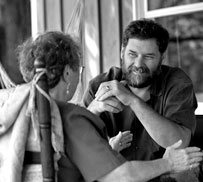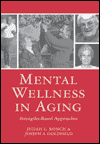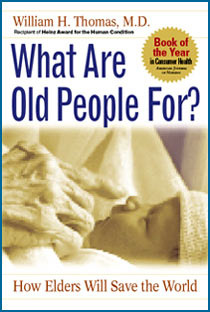![]()
Search
Recent Posts
- ChangingAging.org Redesign -- Please Bookmark!
- Disaster in Buffalo
- Power Up Friday
- Blanchard WinsDays
- Kevin Frick writes...
- Monkhouse Monday
- Getting Closer!
- Blanchard WinsDays
- Power Up Friday
- My Pick for Health and Human Services
- Understanding Health Care Reform
- Facts Are Stubborn Things: Social Security Edition
- Monkhouse Monday
- Localism is Coming
- Krugman Can't Wait...
Recent Comments
Category Archives
- AGING 100
- Aging
- Culture
- Dementia
- Eden Alternative
- Erickson School
- Green House
- Health Policy
- Longevity
- Media
- Rockets
Monthly Archives
- February 2009
- January 2009
- December 2008
- November 2008
- October 2008
- September 2008
- August 2008
- July 2008
- June 2008
- May 2008
- April 2008
- March 2008
- February 2008
- January 2008
- December 2007
- November 2007
- October 2007
- September 2007
- August 2007
 Subscribe to this blog's feed
Subscribe to this blog's feed
Announcements

Blog Data
« Bridging the Gap Between Generations | Main | Aging Well: Volunteers help preserve wilderness »
June 12, 2008 |Permalink |Comments (0)
Sleep
![]() [Editor's Note: Below is Dr. Thomas' latest health column published bimonthly on www.timegoesby.net. Thanks to Ronni Bennett for inviting Bill to become the TGB Geriatrician.]
[Editor's Note: Below is Dr. Thomas' latest health column published bimonthly on www.timegoesby.net. Thanks to Ronni Bennett for inviting Bill to become the TGB Geriatrician.]
The comments about age-related changes in sleep patterns posted in response to the piece I wrote on "Adaptation" reminded me of a patient I knew early in my practice.
She slept an average of 16 hours a day, mostly in blocks of three to four hours at a time. It was clear that she was not distinguishing between night and day and that caused all kinds of problems for her caregivers. I saw the patient regularly and the good news is that, over the next three months, she stared sleeping ten hours a day, almost all of them at night! Still, she was prone to napping in the middle of the day. I told the family not to worry-- napping is normal at her age.
Her mother and father were relieved by the changes, having a newborn baby in the house can be tough! It turns out that how we sleep changes as we age. Toddlers do not sleep in the same way a newborn does, nor does the eighty year old experience sleep the same way a thirty year old does.
So what do we need to know about age related changes in sleep patterns?
1) Not surprisingly, older people are more likely to develop sleep related medical disorders than younger people. Here are a few of the more common disorders along with their definitions.
Nocturnal Leg Cramps: This involves sudden, painful cramping of one or both calf muscles during sleep. The cramp can last for as many as 10 minutes, and the resulting pain from the cramp can last for much longer.
REM Sleep Behavior Disorder (RBD): The person is in REM (dreaming) sleep and acts out violent dreams through body movements and sounds. This disorder generally occurs in older men, but can occur in others as well.
Sleep Bruxism: Also known as teeth grinding during sleep, sleep bruxism is when a person involuntarily grinds or clenches their teeth while sleeping. This can lead to teeth wear and jaw discomfort. The method for treating teeth grinding is usually a mouth guard that is worn during sleep.
Sleep Talking: This usually occurs during a sleep-wake transition of the sleep cycle. The person can utter sounds or even entire sentences. The sleeper generally does not remember doing this in the morning.
Sleep Apnea: Changes in upper airway muscle tone during sleep make breathing difficult. The person experiences shortness of breath, wakes up, breathes and falls back asleep. The pattern can recur hundreds of times a night.
Most of these "parasomnias" have effective treatments.
2) Much more common are sleep-related problems that are caused by medications and medical conditions. It's always a good idea to tell your doctor about how you are sleeping-- even if she doesn't ask and even if you are sleeping well. Few physicians pay enough attention to sleep related issues and patients are wise to raise the issue. Sometimes small changes in medical treatment can make a big difference in how I sleep. I remember being a doctor in training and prescribing a "water pill" to a patient of mine. It was the right drug, it was the right dose the trouble was that I told her to take it in the evening. She was up half the night running to be the bathroom because her doctor (me) didn't know what he was doing.
3) There are normal age-related changes in sleep and sleep patterns. The most important thing is to understand what is normal and what is not normal. Here is a short list of normal changes...
Sleep efficiency is the ratio of the total time we spend in bed (not counting amorous adventures) and the total time we spend sleeping. Sleep efficiency generally decreases with age.
Daytime napping increases with age. It's normal. Enjoy it. Get used to it. Take pride in it. In medical school we used to joke that medical training also teaches students the value of a good nap. I still enjoy a mid-day nap when the opportunity arises.
Phase Advance is the fancy medical term for the experience of going to bed earlier in the evening and waking up earlier in the morning. The sleep phase advances as we age. Many older people fall asleep early in the evening, yet awaken much earlier than desired in the morning and cannot fall back to sleep easily.
Changes in sleep can be merely annoying or they can represent a symptom of a more serious medical situation (heart failure, depression, etc.) Sometimes not even your doctor can be sure which is the case. The general rule I follow is that when changes in sleep patterns are merely annoying-- they are usually normal. When the changes cause real distress or are combined with other non-sleep related symptoms, it's time to make an appointment with your doctor.
Yawn.
I think I'll take a nap.















